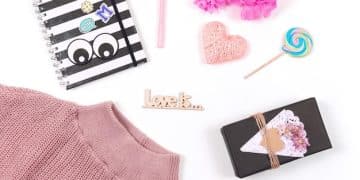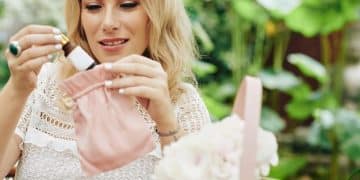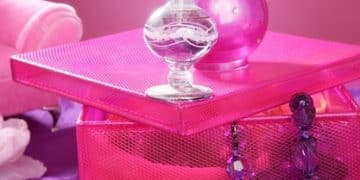Fragrance wardrobe essentials: Build your versatile perfume collection
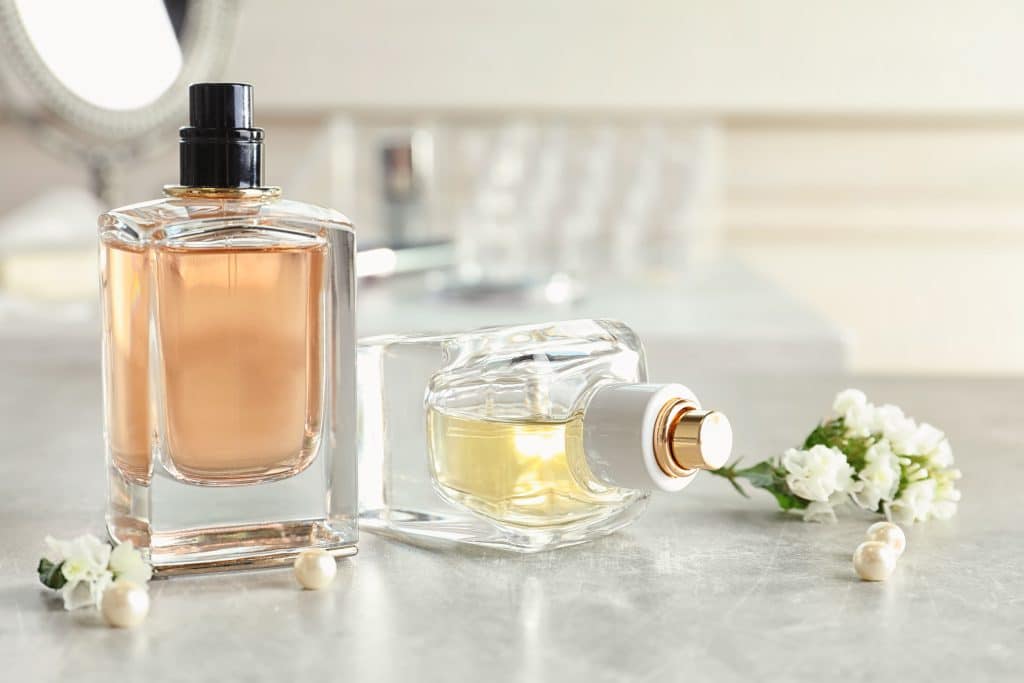
Building a versatile fragrance wardrobe involves curating a collection of perfumes suitable for various occasions, moods, and seasons, moving beyond a single signature scent to embrace the nuanced power of scent in daily life.
Embarking on the journey of curating your perfect fragrance wardrobe essentials, building a collection of versatile perfumes for every occasion can be a deeply personal and rewarding experience.
Far beyond merely owning a few bottles, it’s about artfully selecting scents that complement different facets of your life, moods, and the ever-changing seasons, ensuring you always have the ideal aromatic companion.
Understanding the concept of a fragrance wardrobe
The idea of a fragrance wardrobe mirrors the concept of a clothing wardrobe: a curated selection of items designed to suit various scenarios.
Just as you wouldn’t wear a ball gown to a casual brunch or flip-flops to a formal dinner, the scent you choose should align with the context of your day.
This approach recognizes that perfume is not merely an accessory but an extension of one’s personality and an enhancer of experiences. Developing a diverse fragrance collection allows for greater expression and adaptability.
It moves beyond the traditional notion of a single “signature scent” and embraces the idea that different moments call for different olfactory narratives.
From the vibrant energy of a summer day to the cozy intimacy of a winter evening, your perfumes can set the tone and often, the mood.
Beyond the signature scent
For many years, the pursuit of a singular signature scent dominated the perfume landscape. While there’s comfort in having one beloved fragrance, relying solely on it can limit self-expression and adaptability.
A fragrance wardrobe, in contrast, empowers you to tailor your scent to your desired impact.
- Versatility: A diverse collection allows you to have a scent for every possible scenario.
- Expression: Different fragrances can evoke different facets of your personality.
- Adaptability: Match your perfume to the season, weather, or even your mood.
Understanding the nuances of various fragrance families, such as florals, orientals, woody, and fresh aromas, is crucial for building a well-rounded wardrobe.
Each family carries its own character and typically performs best in certain environments or times of day.
For example, light, citrusy notes are often invigorating for mornings, while richer, spicier notes can be comforting for evenings.
The journey of building a fragrance wardrobe is also an exploration of personal taste. It involves testing, experimenting, and often, making informed decisions based on how a scent evolves on your skin over time.
This ongoing discovery is part of the joy, making it a truly personal and evolving project.
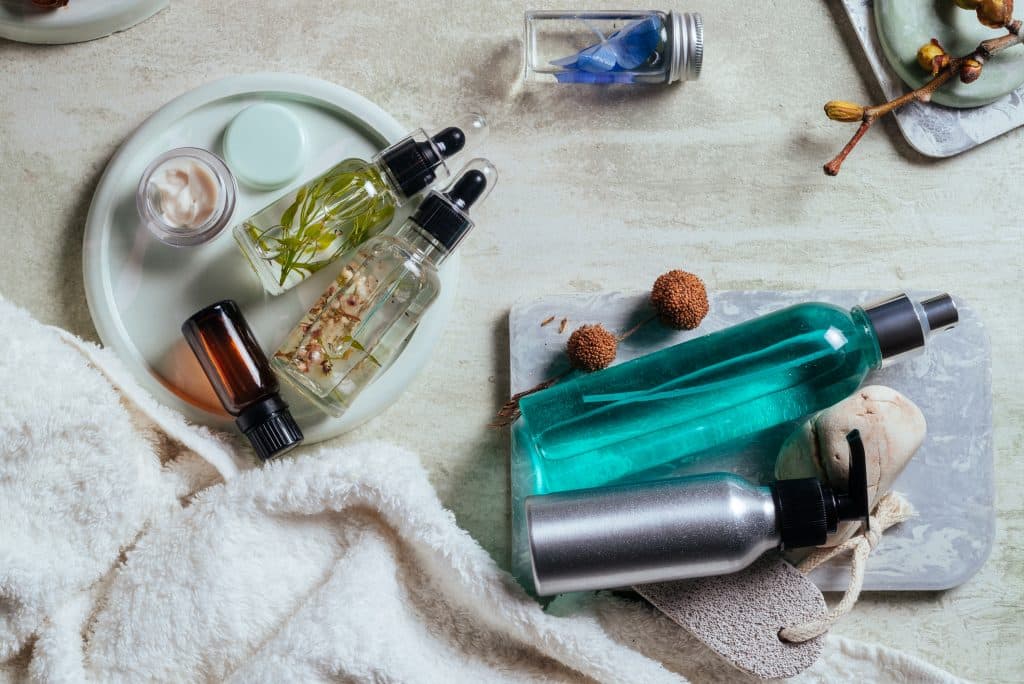
Key fragrance families for a balanced collection
To build a truly versatile fragrance wardrobe, it’s essential to understand the primary fragrance families. Each family brings distinct characteristics and suits different occasions or seasons.
Categorizing scents helps in making informed choices and ensures you cover a wide array of olfactory experiences, moving beyond merely pleasant smells to functional choices.
Understanding the typical longevity and sillage of each family also plays a role in selection.
Lighter scents, like citruses, tend to be less long-lasting than rich orientals, which means they might require reapplication or are better suited for shorter events.
Citrus/fresh: The uplifting start
These fragrances are characterized by their zesty and vibrant notes, often featuring lemon, bergamot, grapefruit, and mandarin.
They evoke feelings of freshness, cleanliness, and energy, making them perfect for morning wear, casual daytime events, or warm weather.
They offer an invigorating burst that wakes up the senses without being overpowering.
- Typical Notes: Lemon, bergamot, orange, grapefruit, neroli.
- Best for: Daytime, spring/summer, casual outings, professional settings.
- Vibe: Clean, crisp, energetic.
Citrus scents are often intertwined with aquatic or green notes to enhance their refreshing quality, creating a harmonious blend that feels both natural and sophisticated.
They are the ideal choice when you want to appear approachable and subtly refined.
Floral: Timeless elegance
The floral family is vast and diverse, ranging from single-flower (soliflore) compositions like rose or jasmine to complex bouquets.
They are universally appealing and can be adapted for almost any occasion, depending on the specific flowers used and the accompanying notes.
Light florals are perfect for daytime, while richer, more opulent florals suit evenings.
- Typical notes: Rose, jasmine, lily of the valley, tuberose, gardenia, ylang-ylang.
- Best for: Everyday wear, romantic occasions, spring/summer, formal events.
- Vibe: Romantic, feminine, elegant, graceful.
When selecting floral perfumes, consider the balance: some are soft and powdery, others green and crisp, and some are deeply rich and intoxicating.
This variety allows for incredible flexibility within your collection, ensuring you always have a floral that fits your specific need.
Woody/earthy: Grounded sophistication
Woody fragrances are known for their warm, rich, and often dry notes derived from trees and resins. Think sandalwood, cedarwood, vetiver, and patchouli.
These scents convey a sense of grounding, stability, and natural elegance. They are excellent for cooler weather or occasions where a more profound, assertive presence is desired.
The earthy undertones often found in this family, like moss or pine, add to their natural charm.
They blend seamlessly with the environment, offering a subtle yet impactful aura. Woody scents are generally gender-neutral and can be wonderfully sophisticated.
Oriental/spicy: Warmth and allure
Oriental fragrances are opulent, complex, and often warm, featuring notes like vanilla, amber, musk, and exotic spices such as cinnamon and clove.
They are incredibly alluring and long-lasting, making them ideal for evening wear, special occasions, or cooler months when a comforting yet powerful scent is desired.
These perfumes tend to have a strong sillage and longevity due to their rich base notes. They create a memorable impression and evoke a sense of mystery and sophistication.
The interplay of sweet, often balsamic notes with sharp spices provides a captivating contrast.
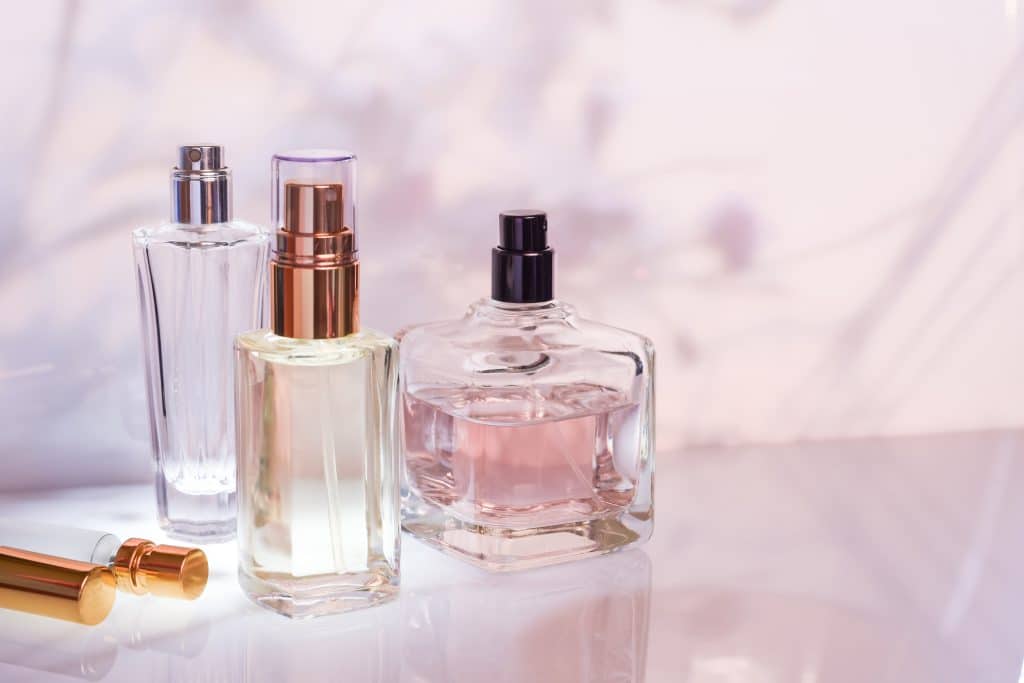
Building your collection: Practical steps
Creating a fragrance wardrobe isn’t about accumulating dozens of bottles; it’s about strategic selection.
The goal is to have a diverse yet manageable collection that genuinely enhances your life.
Starting with a few key pieces and gradually expanding is often the best approach, focusing on quality and versatility. You don’t need to break the bank to start.
Many brands offer sample sizes or travel sprays, which are excellent for testing scents over time before committing to a full bottle.
Online communities and dedicated fragrance shops can also provide valuable insights and recommendations depending on your preferences.
Start with core staples
Begin your collection with a versatile selection that covers your basic needs. Aim for one or two scents from the most widely applicable fragrance families.
A light, fresh scent for daily wear, and a warmer, more sophisticated option for evenings or cooler weather, are good starting points.
This foundational set ensures you’re prepared for most common scenarios.
- Daytime/work: A clean, fresh, or light floral scent.
- Evening/special occasions: A richer oriental or woody fragrance.
- Casual/weekend: A more relaxed, perhaps green or citrusy scent.
Don’t be afraid to revisit classic scents, as they often have enduring appeal and have proven their versatility over time.
However, also stay open to new releases and independent perfumers who might offer unique perspectives.
Consider the occasion and season
Matching your fragrance to the occasion and season is key to a truly effective wardrobe. Lighter scents perform better in heat, while heavier, more complex notes shine in cooler temperatures.
Context, whether it’s a formal event or a casual get-together, also dictates appropriate strength and character.
For example, a strong, heady oriental might be overwhelming for an office environment but perfect for a glamorous evening out.
Conversely, a delicate floral could fade quickly at an outdoor winter event but be ideal for a spring garden party.
Test before you invest
Perfumes react uniquely with individual skin chemistry. What smells divine on a friend might not work for you, and vice versa.
Always test a fragrance on your skin and allow it to develop over several hours before making a purchase. This allows you to experience the top, middle, and base notes fully.
Many retailers offer samples, and online decant services allow you to purchase small amounts of expensive fragrances.
This “try before you buy” approach is invaluable in preventing costly mistakes and ensures every addition to your wardrobe is truly loved and utilized.
Curating for specific scenarios and moods
A truly refined fragrance wardrobe goes beyond just categorizing by family or occasion; it delves into how scents can articulate moods and enhance specific experiences.
Think about the feeling you want to evoke or the impression you wish to leave. This deeper level of curation elevates your choices from mere accessories to expressive tools.
The power of scent is deeply connected to memory and emotion. By intentionally selecting perfumes for certain scenarios or states of mind, you can create powerful olfactive anchors that enhance those moments, making them more vivid and memorable.
This is where personal storytelling with scent truly begins.
Professional settings: Subtle and sophisticated
For the workplace, discretion and subtlety are paramount. You want a scent that signals professionalism and confidence without being distracting or overpowering to others.
Think about notes that are universally appealing and convey a sense of calm and competence.
- Recommended notes: Light musks, clean cotton, subtle woods, fresh citrus, understated florals (e.g., iris, white tea).
- Avoid: Heavy gourmands, overly sweet or strong spice bombs, anything too challenging or polarizing.
The goal is to enhance your presence, not to announce it. A soft sillage (the trail a perfume leaves) and moderate longevity are often preferable.
Consider classic, timeless choices that evoke reliability and attentiveness.
Casual outings: Effortless and approachable
When you’re out with friends, running errands, or simply enjoying a relaxed day, your fragrance should reflect an easygoing, approachable vibe.
These are opportunities for scents that bring joy, comfort, or a touch of playful charm, without demanding too much attention.
Fresh, green, or light fruity notes work wonderfully here. Something that feels like ‘you’ on a relaxed day.
This is also a good opportunity to experiment with less common or more whimsical scents that might not fit formal occasions.
Evening/formal events: Allure and impact
These are the moments to bring out your statement fragrances. Evening scents tend to be richer, deeper, and more complex, with greater sillage and longevity.
They are designed to make an impression and complement the formality and sophistication of the occasion.
Consider orientals with notes of amber, vanilla, or spices, or powerful woody fragrances with oud or leather accords.
Richer florals like tuberose or jasmine, especially when blended with deeper notes, can also be incredibly seductive and elegant for evening. The key is often a perfume that unfolds over time, revealing its complexity.
Seasonal adaptations: Harmony with nature
Just as we change our clothes with the seasons, our fragrances can adapt to the climate and mood of the year.
This not only makes the scent more comfortable to wear but also enhances its natural projection and longevity.
- Spring: Light, fresh florals (e.g., lily of the valley, peony), green notes, gentle fruits.
- Summer: Crisp citruses, aquatic notes, tropical fruits, light musks, coconut.
- Autumn: Warm spices (e.g., cinnamon, cardamom), earthy notes (e.g., patchouli, vetiver), subtle gourmand elements, soft leathers.
- Winter: Rich orientals, heavy woods (e.g., oud, sandalwood), deep gourmands (e.g., vanilla, chocolate), resinous and smoky notes.
Adapting your fragrance to the season ensures that your scent feels in harmony with the environment, making it more pleasant for both you and those around you.
It’s about respecting how temperature and humidity affect a fragrance’s performance.
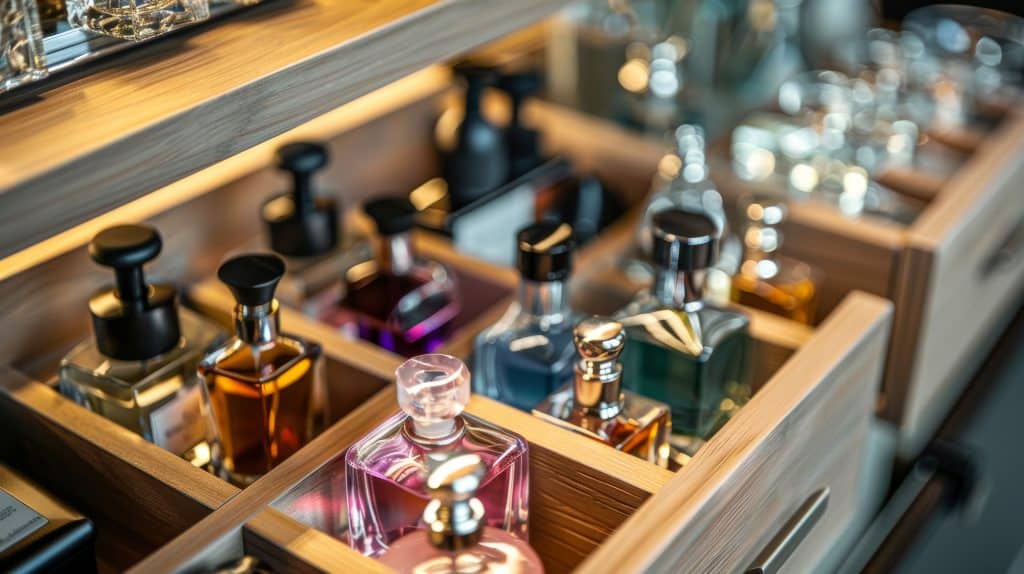
Maintenance and storage of your fragrance wardrobe
Building a noteworthy fragrance collection is only one part of the journey; maintaining it properly is equally crucial.
Proper storage and care will preserve the integrity, longevity, and true scent profile of your perfumes.
Neglecting these aspects can lead to rapid degradation of your cherished bottles, diminishing their aromatic beauty.
Think of perfume as a delicate art piece that requires specific environmental conditions to thrive. Heat, light, and humidity are the primary enemies of fragrance.
Protecting your investment ensures that each spritz delivers the full, intended experience, from the first captivating top note to the lingering base.
Ideal storage conditions
The enemy of perfume longevity is inconsistency. Volatile compounds within a fragrance react poorly to fluctuations in temperature and exposure to light.
Keeping your bottles in a cool, dark, and dry place is paramount. Avoid direct sunlight at all costs, and steer clear of bathrooms where humidity and temperature can swing dramatically.
A closed cabinet, a drawer, or even a specialized fragrance cellar (for serious collectors) provides the ideal environment.
Keeping perfumes in their original boxes can also add an extra layer of protection against light and air, doubling down on preservation efforts.
Humidity and temperature control
High humidity can accelerate the degradation of fragrance wardrobe compounds, leading to a sour or altered scent.
Similarly, extreme temperatures, whether too hot or too cold, can break down the chemical bonds in a perfume, causing it to lose its complexity, or worse, turn rancid.
A consistent, cool room temperature is optimal. Aim for temperatures around 60-70°F (15-21°C).
A wine cooler or a dedicated mini-fridge (if specifically designed for cosmetics or wines) could be an option for extremely expensive or rare bottles, but for most, a cool, dark cupboard is sufficient. The key is stability.
Beware of oxidation
Once a perfume bottle is opened, it begins to come into contact with oxygen, which can lead to oxidation over time.
While unavoidable, large, frequent exposure to air can accelerate this process. Avoid vigorously shaking your perfume bottles, as this introduces more air into the liquid.
The atomiser mechanism is designed to minimize air ingress, but regular use and storage conditions still play a part.
Older perfumes, especially those with natural ingredients, are more susceptible to oxidation.
Though it can’t be completely stopped after opening, good storage significantly slows it down.
Expanding and evolving your fragance wardrobe over time
A fragrance wardrobe is not a static entity; it’s a living, breathing collection that should grow and adapt with you.
As your tastes evolve, as new experiences shape your preferences, and as the perfume world continues to innovate, so too should your collection. This ongoing evolution keeps your fragrance journey exciting and relevant.
The process of expanding involves more than just buying new bottles; it’s about thoughtful integration and sometimes, graceful retirement of scents that no longer serve your purpose.
It reflects a deeper appreciation for the art of perfumery and how it intertwines with our personal story.
Refining your preferences
As you delve deeper into the world of perfume, your nose will become more refined.
You’ll start to discern subtle notes, appreciate complex compositions, and understand what truly resonates with your personal style.
This refining of preference is a natural part of the journey and should guide your future acquisitions.
- Track your likes and dislikes: Keep a journal of perfumes you’ve tried.
- Note emotional connections: How does a scent make you feel? What memories does it evoke?
- Consider specific accords: Do you find yourself repeatedly drawn to certain notes, like vanilla, leather, or specific florals?
This introspection helps you move beyond simply enjoying a scent to understanding why you enjoy it, leading to more informed and satisfying choices for your wardrobe.
Exploring niche and artisanal perfumes
Once you’ve established your core collection, exploring niche and artisanal brands can open up a whole new realm of olfactory experiences.
These brands often push boundaries, use unique ingredients, and offer creations that stand out from mainstream offerings. They provide an opportunity for deeper personal expression.
Niche perfumery emphasizes artistry and originality over mass appeal, often resulting in more unique, distinctive, and sometimes bolder scents.
This can be where you find those truly special, conversation-starting fragrances that perfectly complement a specific facet of your personality.
Don’t be afraid to declutter
Just like a clothing wardrobe, a fragrance wardrobe can benefit from occasional decluttering. Scents can turn over time, or your preferences might simply change.
There’s no need to hold onto perfumes that you no longer enjoy or that have spoiled. Letting go makes room for new discoveries.
Consider passing on perfumes you no longer use (if they are still in good condition) to friends or family, or even selling them to fellow enthusiasts.
This practice not only keeps your collection fresh but also prevents unnecessary clutter and waste, making space for new additions that truly excite you.
| Key Aspect | Brief Description |
|---|---|
| ✨ Versatile Selection | Curate scents for different occasions, moods, and seasons, moving beyond a single signature aroma. |
| 🌸 Fragrance Families | Understand citrus, floral, woody, and oriental notes to build a balanced and expressive collection. |
| 🧪 Test & Invest Wisely | Always test perfumes on skin; samples prevent costly errors and ensure genuine enjoyment. |
| 🌡️ Proper Storage | Store perfumes in cool, dark places away from humidity to preserve their quality and lifespan. |
Frequently Asked Questions about Fragrance Wardrobe
There’s no magic number, but a well-rounded wardrobe typically contains 5-10 versatile perfumes. This allows for diverse options for different occasions, seasons, and moods without becoming overwhelming or leading to unused bottles. Focus on quality and versatility over sheer quantity.
These terms refer to the concentration of fragrance oils. Eau de Parfum (EDP) has the highest concentration and longevity, followed by Eau de Toilette (EDT), and then Eau de Cologne (EDC). For your wardrobe, EDPs are best for impact and lasting power, while EDTs and EDCs are lighter and ideal for casual or daytime wear.
Yes, layering (or “fragrance combining”) is a creative way to personalize your scent. Start by layering simpler, complementary scents or using a neutral base like a musk. Experiment on skin to see how two or more perfumes interact, creating a unique signature aroma that is entirely your own and enhances your collection’s versatility.
It depends on personal preference and how quickly your tastes evolve. Many people refresh their wardrobe seasonally, adding 1-2 new scents per year. Keep track of what you enjoy and what rarely gets used. Don’t be afraid to declutter perfumes that no longer appeal to you or have passed their prime for new and exciting additions.
While not strictly “essential,” embracing unisex perfumes can significantly enhance the versatility of your wardrobe. They often feature notes that defy traditional gender classifications, such as woods, spices, or certain fresh accords, offering a broader and more diverse olfactory experience. They provide unique options for various moods and contexts, expanding your choices considerably.
